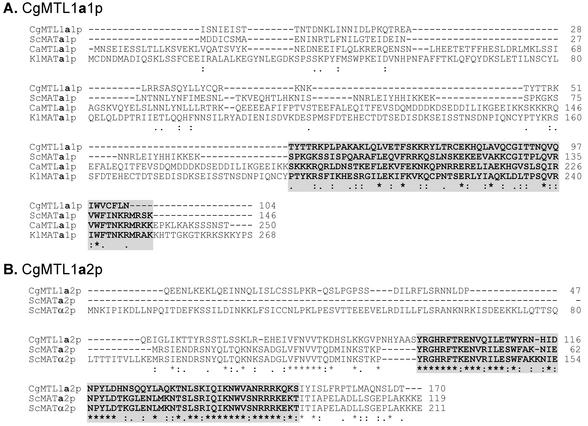FIG. 3.
Sequence comparison of MTL1a1p and MTL1a2p of C. glabrata strain 7549 with MATa1ps and MATa2ps of other yeast species. (A) Aligned sequences of C. glabrata (Cg) MTL1a1p and MATa1ps or MTLa1ps of S. cerevisiae (Sc), C. albicans (Ca), and K. lactis (Kl). B. Aligned sequences of C. glabrata MTL1a2p and S. cerevisiae MATa2p and MATα2p. The shaded sequences in both panels represent the highly conserved amino acid residues (boldface) involved in the interaction between S. cerevisiae MATa1p and S. cerevisiae MATα2p in the formation of the a1-α2 repressor complex. Note that S. cerevisiae MATa2p and MATα2p share identical amino acid residues in this region, but the physiological role of S. cerevisiae MATa2p is not known. Asterisks indicate identical residues, two stacked dots indicate conservative substitutions based on similar functional groups, and one dot indicates conservative substitutions based on similar effects on secondary structure. The accession numbers for sequences other than those of C. glabrata are as follows: ScMATa1p, PO1366; CaMATa1p, AAD51404.1; KlMATa1p, AAG21094.1; ScMATa2p, CAA246201.1; and ScMATα2p, AAA34762.1. The accession numbers for C. glabrata MTL1a and MTL2a are AY191461 and AY191464, respectively.

